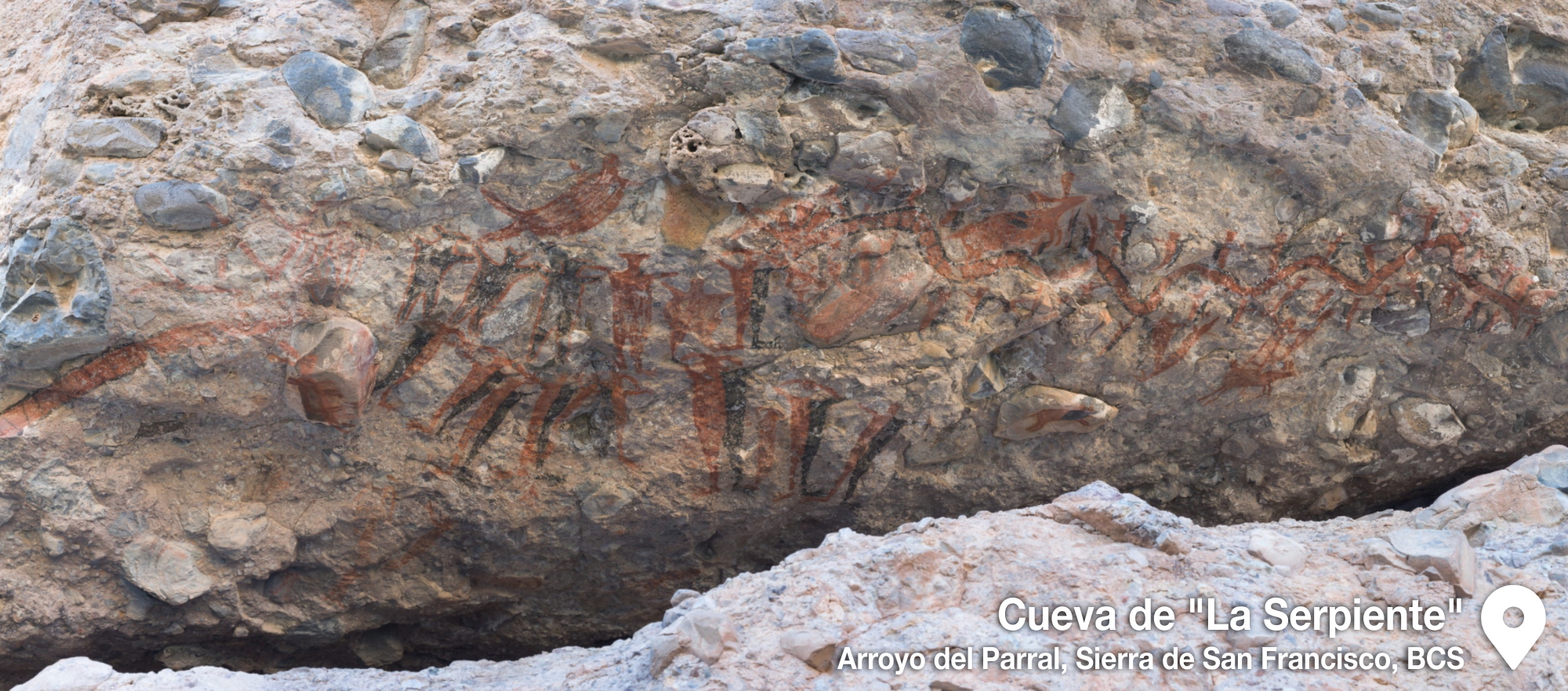Cueva de La Serpiente

La observación del descenso de una serpiente se puede
realizar conforme el astro solar surge en el horizonte, el cual se va
desplazando hasta proyectar la sombra de un cerro sobre una gran grieta que, precisamente,
simula de manera ondulante el descenso de un ofidio a la tierra. Bajo esa
grieta, la forma ondulante de esta serpiente pintada en color rojo desciende
para encontrarse con otra muy similar.
Los pigmentos para el pintado interior de las cuevas y otros lugares, como abrigos y respaldos rocosos, se preparaban con minerales que eran reducidos a un finísimo polvo al que se le iban añadiendo diferentes aglutinantes como agua, sangre, grasa animal y extractos de plantas, para después ser aplicado con pinceles o directamente con los dedos. Del óxido de hierro fue sacado el color rojo, del manganeso el negro, y del yeso se obtuvo el blanco. Con estos colores se lograron más de veinticinco tonalidades que fueron matizando los pigmentos haciendo de muchos sitios un espacio excepcional de gran colorido, los cuales apenas estamos comenzando a conocer.
The snake
The cave of the Serpent is one of the sites of the mountain slope that slides its folds over the hills to find the plains that approach San Ignacio. The site is a representation of the Sierra de San Francisco style. Its capital significance is that it represents the descent of a snake with deer antler, just in the spring equinox, that is to say on March 21, which indicates that some of the sites with cave paintings could fulfill, among other functions , to be very specific calendar markers.
The observation of the descent of a snake can be done as the solar star emerges on the horizon, which moves to project the shadow of a hill over a large crack that precisely simulates the descent of an offense to the wave land. Under that crack, the undulating shape of this snake painted in red descends to meet another very similar one.
The pigments for the interior painting of the caves and other places, such as coats and rocky backs, were prepared with minerals that were reduced to a very fine dust to which different binders such as water, blood, animal fat and plant extracts were added, then be applied with brushes or directly with the fingers. From the iron oxide the red color was removed, from the manganese the black, and from the plaster the white was obtained. With these colors were achieved more than twenty-five shades that were tinting the pigments making many places an exceptional space of great color, which we are just beginning to know.
Detalles
Lugar: Mulegé, Mulegé
Dirección: Camino a San Francisco de la Sierra, Mulegé, Baja California Sur
Página web: Sendarupestre.cultura-bcs.gob.mx

